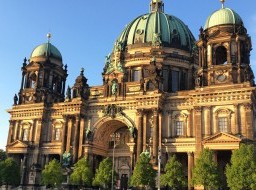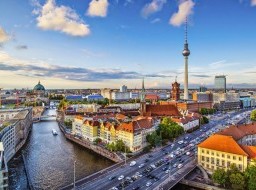Potsdamer Platz
Potsdamer Platz has been redeveloped as the new centre of Berlin after the fall of the Wall. A bustling traffic intersection in the 1920s, it became desolate after WW II and part of the border strip. Berlin's Potsdamer Platz is the most striking example of the urban renewal that turned Berlin into the "New Berlin" in the 1990s although it is not, strictly-speaking, a square. The area today consists of the three developments known as Daimler City (1998), the Sony Centre (2000) and the Beisheim Centre (2004), which literally transformed the dormant wasteland where the Berlin Wall stood between east and west Berlin until 1989. The challenge of rebuilding the heart of post Cold War Berlin was no trifling matter – how to transform a desolate sandy wasteland into the new German capital's city centre. At stake was nothing less than making a statement on the fundamental principles of urban design at the end of the 20th century. Many issues needed to be addressed. How to reconcile public against commercial interests, the integration of two transport systems, road and infrastructural planning affecting the new re-united centre, limiting traffic in the inner city area and incorporating ecological considerations, deciding on the style of architecture - Manhattan high-rise buildings or lower housing, traditional, futuristic or avant-garde? The long debates about the future of Potdamer Platz needed to resolve the issue of bringing authentic metropolitan life into an area which had been dead for years – integrating residential accommodation with shopping, leisure and business needs to ensure that the area live around-the-clock. What can be seen today is believed to have resulted in a successful compromise - a mixture of the American plaza feel at the Sony Centre and a tree-lined European downtown around the Marlene Dietrich Platz producing a lively, buzzing atmosphere. |





